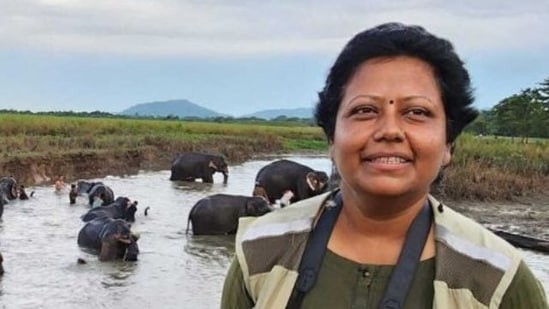Mission for Aatmanirbharta in Pulses (2025–26 to 2030–31)

- 14 Oct 2025
In News:
- India has launched an ambitious Mission for Aatmanirbharta in Pulses (2025–26 to 2030–31),signalling a major push toward self-sufficiency in pulses and farmer-centric agricultural transformation.
- Announced during a special programme at the Indian Agricultural Research Institute (IARI), the Mission carries an outlay of ?11,440 crore and aims to meet India’s pulses requirement entirely through domestic production by December 2027.
- Pulses hold strategic importance for India as they ensure nutritional security, enrich soil through nitrogen fixation, support rural livelihoods, and reduce import bills. Despite being the world’s largest producer and consumer, India's demand-supply gap has led to significant imports—47.38 lakh tonnes in 2023-24. The Mission seeks to eliminate this dependence and strengthen farmer income security.
Key Targets (by 2030–31)
- Total production:350 lakh tonnes
- Cultivation area:310 lakh hectares (including 35 lakh ha rice fallows)
- Yield target:1,130 kg/ha
- Beneficiaries: Nearly 2 crore farmers
- Import elimination by Dec 2027
Core Components of the Mission
Seed & Technology Push
- 126 lakh quintals of certified seeds
- 88 lakh free seed kits
- Deployment of high-yielding, pest-resistant, climate-resilient varieties
- Launch of SATHI Portal (Seed Authentication, Traceability & Holistic Inventory) for seed lifecycle transparency
Assured MSP & Farmer Security
- 100% procurement of Tur, Urad, and Masoor for four years
- Procurement support via NAFED & NCCF
- Linked to PM-AASHA for guaranteed price support and reduced market risk
Cluster-Based Integrated Approach
- "One Block – One Seed Village" model
- FPO-driven clusters to streamline seed production & marketing
- Mechanization, soil health management, and balanced fertilization
- Agronomy support from ICAR, KVKs & state agriculture departments
Value Chain Strengthening
- 1,000 processing & packaging unitsincentive: up to ?25 lakh per unit
- Focus on storage, processing, branding, and market linkages
Social and Nutrition Focus
- Inclusion of pulses in PDS, ICDS, Mid-Day Meal schemes
- Strengthening food-based welfare with protein security
NITI Aayog Recommendations Integrated
- Expansion into rice fallows
- Cluster-based cultivation & seed hubs
- “One Block–One Seed Village”
- Data-driven monitoring through SATHI
- Public procurement strengthening at grassroots
- Climate-resilient, short-duration pest-resistant varieties
Strategic Significance
- Supports Vision 2047&Viksit Bharat
- Strengthens food sovereignty & rural employment
- Saves foreign exchange by cutting pulse imports
- Enhances soil fertility & climate resilience
- Boosts farmer incomes and reduces agrarian vulnerability
IUCN Kenton Miller Award 2025

- 14 Oct 2025
In News:
India has achieved a landmark moment in global conservation as Dr. Sonali Ghosh, Field Director of Kaziranga National Park and Tiger Reserve (Assam), became the first Indian to receive the prestigious IUCN WCPA Kenton Miller Award 2025. The honour was announced at the IUCN World Conservation Congress in Abu Dhabi, highlighting India’s rising leadership in biodiversity governance and protected-area innovation.
About the IUCN Kenton Miller Award
- Instituted: 1999
- Presented by:IUCN World Commission on Protected Areas (WCPA)
- Named after: Dr. Kenton R. Miller, eminent conservationist & former IUCN Director-General
- Purpose:Recognisesoutstanding innovation and excellence in the sustainability and governance of protected areas
- Eligibility: Protected-area managers, researchers, community/indigenous conservation practitioners
- Award Components:
- USD 5,000 grant
- Global citation
- Sponsored participation at the IUCN Congress
Significance of Dr. Ghosh’s Contribution
Dr. Ghosh has been awarded for pioneering inclusive and sustainable protected-area management across the Kaziranga-Orang-Manas landscape. Key initiatives include:
- Community-centric conservation: Empowering local and indigenous communities as co-stewards
- Eco-tourism models: Ensuring livelihood security while safeguarding biodiversity
- Anti-poaching and habitat security: Strengthening surveillance and ecological connectivity
- Gender inclusion: Promoting women’s participation in frontline conservation forces
Her leadership reflects India’s approach to biodiversity protection through grassroots participation, science-based governance, and livelihood integration.
Broader Context: India at the IUCN Congress
At the Congress, India reiterated its commitment to global environmental cooperation. Union Minister Kirti Vardhan Singh engaged with international delegates and IUCN leadership on advancing shared conservation goals, reinforcing India's stance as a proactive global environmental actor.
About IUCN and the World Conservation Congress
- Founded: 1948
- HQ: Switzerland
- Global network of governments, NGOs, and experts from 160+ countries
- World Conservation Congress: Held every four years to set global biodiversity priorities
Previous Winner (2023)
- Maria del Carmen Garcia Rivas (Mexico) – Honoured for community-led management of marine protected areas.
International Purple Fest 2025

- 14 Oct 2025
In News:
- The International Purple Fest 2025, held in Goa reaffirmed India’s commitment to disability inclusion, accessibility, and empowerment.
- Organized by the Department for Empowerment of Persons with Disabilities (DEPwD) in partnership with the State Commissioner for Persons with Disabilities, Government of Goa, the Ministry of Social Justice & Empowerment, and United Nations India, the Fest promoted the vision of “Inclusion as a Movement.”
- The event positioned inclusive thinking and universal design as the foundation for education, skilling, and social participation of persons with disabilities (PwDs).
Key Initiatives Launched
1. IELTS Training Handbook for Persons with Disabilities
- Developed by Believe in the Invisible (BITI) with DEPwD support
- Authored by Anjali Vyas, British Council-certified trainer
- India’s first comprehensive accessible IELTS guide for candidates with visual, hearing, locomotor, and other disabilities
- Features:
- Step-by-step learning modules, skill-building tools, and lesson plans
- Accessible practice exercises, time-management support, grammar and vocabulary tips
- Integrated Indian Sign Language (ISL) video links
- Objective: Promote equitable access to global education and skill mobility
2. RPL Certification in ISL Interpretation
- Conducted by Indian Sign Language Research and Training Centre (ISLRTC) under the Skill Training Initiative of DEPwD
- Trained and evaluated SODA (Siblings of Deaf Adults) and CODA (Children of Deaf Adults) from across India
- First batch completed in August 2025, certificates to be awarded on 3 December 2025 (International Day of PwDs)
- Significance: Expands India’s certified ISL interpreter pool and formalizes community-based linguistic skills
3. Specialized Training in American & British Sign Languages
- One-month programme by ISLRTC commencing 3 December 2025
- Focus: Fundamentals of American Sign Language (ASL) and British Sign Language (BSL) — grammar, syntax, vocabulary
- Aim: Provide international exposure to Indian ISL professionals and enhance global employment opportunities
Significance
- Strengthens the National Education Policy’s inclusion mandate
- Builds skilled interpreters to meet growing demand in education, healthcare, public services, and courts
- Promotes disability-inclusive skilling aligned with the Rights of Persons with Disabilities Act, 2016
- Enhances India’s visibility in global disability rights discourse
Operation Golden Sweep

- 14 Oct 2025
In News:
The Directorate of Revenue Intelligence (DRI) has successfully dismantled a sophisticated international gold smuggling syndicate through “Operation Golden Sweep” at Mumbai’s Chhatrapati Shivaji Maharaj International Airport. The enforcement action, based on precise intelligence inputs, reflects India’s strengthened efforts to curb illicit financial flows and protect economic security.
Key Highlights
- Gold Seized: 10.488 kg of 24-carat gold
- Estimated Value: ?12.58 crore
- Arrests: 13 individuals — including foreign nationals (Bangladesh & Sri Lanka), airport staff, handlers, and the key mastermind
- Objective: Disrupt organised smuggling networks that erode foreign exchange reserves and threaten national security
Modus Operandi
The syndicate used an advanced and covert smuggling technique:
- Transit passengers flying from Dubai to Singapore, Bangkok, and Dhaka, routing via Mumbai, served as carriers
- Gold was concealed in egg-shaped wax capsules internally
- On arrival, gold was discreetly handed to complicit airport personnel within the international departure zone
- Airport insiders then smuggled the gold out and delivered it to handlers, who coordinated with the mastermind based in Mumbai and Dubai
This exposure underscores a rising insider threat in critical aviation infrastructure, where organised networks exploit privileged access.
Significance of the Operation
- Demonstrates DRI’s intelligence-driven enforcement, rapid execution, and inter-agency coordination
- Highlights evolving trade-based and route-based smuggling tactics
- Reinforces India's commitment to financial integrity, supply-chain security, and national economic interests
IUCN World Heritage Outlook 2025
- 14 Oct 2025
In News:
- The IUCN World Heritage Outlook 4, to be launched at the IUCN World Conservation Congress 2025 in Abu Dhabi, represents the world’s most comprehensive periodic evaluation of the conservation status of UNESCO natural and mixed World Heritage Sites.
- Conducted every 3–5 years by the International Union for Conservation of Nature (IUCN) and the World Commission on Protected Areas (WCPA), it provides an independent, transparent assessment of protection efforts, threats, and future prospects for these globally significant ecosystems.
Purpose and Significance
The Outlook functions as a global conservation barometer designed to:
- Monitor the state of conservation of natural World Heritage Sites
- Highlight exemplary site management and transfer of best practices
- Provide early warnings for ecological degradation and governance failures
- Bridge data gaps through expert-led evaluation and advanced monitoring tools
- Showcase the societal and ecological benefits of natural heritage, including livelihoods, disaster resilience, and carbon storage
This mechanism complements UNESCO’s statutory monitoring under the 1972 World Heritage Convention, strengthening global efforts to realize the Kunming–Montreal Global Biodiversity Framework (KM-GBF) targets by 2030.
Global Conservation Outlook: Key Findings (2025)
- ~65% of sites show stable or improving health since 2020, reflecting enhanced governance and restoration actions. Example: Galápagos Islands, Yellowstone National Park
- Over 80% of sites face direct climate threats—coral bleaching, glacier retreat, wildfires. Example: Great Barrier Reef
- ≈60% experience pressures from invasive species, habitat loss, and unsustainable resource use
- Marine sites like Komodo National Park (Indonesia) and Aldabra Atoll (Seychelles) show progress through sustainable tourism and science-based management
- Technology integration (AI, satellite mapping, eDNA) is improving real-time monitoring. Example: AI-enabled wildlife tracking in Okavango Delta
- Around 15 sites have moved into the Danger List due to conflict, pollution, and climate impacts
- Natural World Heritage sites hold ~10% of global terrestrial carbon, underlining their climate role
Natural World Heritage: Global Profile (2024)
- 271 sites with natural Outstanding Universal Value
- 231 natural, 40 mixed
- 22% of all World Heritage properties (1,223 total)
- Over 470 million hectares protected across land and sea
- Represent ~8% of global protected area coverage
- Spread across 115 countries
- Africa: 47
- Asia-Pacific: 85
- Europe & North America: 83
- Latin America & Caribbean: 47
- Arab region: 9
- 18 transboundary sites; 15 in Danger List
India: Trends and Insights
India hosts 7 natural and mixed World Heritage Sites, spanning the Himalayas to coastal wetlands, constituting ~1.5% of global natural WH coverage.
Positive developments
- Kaziranga&Manas: Improved biodiversity and anti-poaching success through community stewardship and regulated ecotourism
Sites of concern
- Sundarbans: Declining mangroves due to salinity rise, cyclones, and sea-level change
- Western Ghats: Pressures from mining, infrastructure, and land-use conflicts
- Nanda Devi & Great Himalayan National Park: Glacial melt and invasive species affecting Himalayan watersheds
Policy support
- Wildlife (Protection) Amendment Act, 2022
- LiFE Mission for sustainable lifestyles aligned with KM-GBF
- Funding gaps: ~30–40% higher financial allocation needed, especially for marine and transboundary sites
Major Challenges
|
Challenge |
Impact |
|
Climate change |
Coral bleaching, glacial retreat, desertification |
|
Unsustainable development |
Habitat fragmentation, tourism pressure |
|
Funding shortfalls |
Inadequate staffing, weak surveillance |
|
Governance issues |
Overlapping mandates, weak enforcement |
|
Biodiversity data gaps |
Limits adaptive and real-time conservation |
Recommendations
- Climate-resilient planning: Integrate heritage into national climate strategies. Example: Aligning LiFE and National Adaptation Fund with site targets
- Green financing: Carbon credits, biodiversity funds, CSR, eco-investment
UNDP–GEF BIOFIN as model - Local and Indigenous partnership: Community co-management and benefit-sharing. Example: Eco-Development Committees in Manas and Periyar
- Tech-enabled conservation: AI surveillance, remote sensing, eDNA, drones. Example: IUCN Global Ecosystem Atlas initiative
- Transboundary cooperation: Joint research and ecological corridors. Example: India–Nepal Terai Arc Landscape
